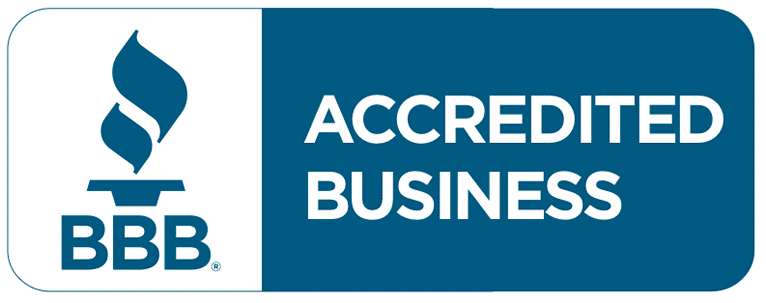If you’re wondering how to seal garage door gaps to enhance your home’s security and energy efficiency, you’re in the right place. Sealing these gaps is crucial for several reasons. Gaps in your garage door can lead to various problems, including pest infestations, drafts, and significant energy loss. By addressing these issues, you can create a more secure and efficient home environment.
A well-sealed garage door can make a noticeable difference in the overall comfort and safety of your home. Unsealed gaps can allow pests such as insects and rodents to enter, which can lead to infestations and potential damage to your belongings. Additionally, these gaps can let in cold air during the winter and hot air during the summer, making it harder for your heating and cooling systems to maintain a consistent indoor temperature. This not only increases your energy bills but also places extra strain on your HVAC system.
Furthermore, large gaps can compromise the security of your home. Intruders can exploit these openings to gain easy access to your garage and potentially your home. Sealing these gaps is a simple yet effective way to enhance your home’s security, providing peace of mind for you and your family.
Weather conditions can also affect your garage and its contents. Rain, snow, and wind can enter through unsealed gaps, leading to water damage, rust, and other issues. By properly sealing these gaps, you can protect your garage and its contents from the elements, extending the lifespan of your belongings and maintaining a cleaner, drier environment.
In this guide, we’ll walk you through a straightforward, step-by-step process to seal your new garage door gaps effectively. Whether you’re dealing with minor drafts or significant openings, our comprehensive instructions will help you tackle the problem with confidence. By the end of this guide, you’ll have all the knowledge and tools you need to ensure your garage door is well-sealed, contributing to a more secure, energy-efficient, and comfortable home.
Understanding the Importance of Sealing Garage Door Gaps
Sealing garage door gaps is crucial for several reasons. First, it helps protect against pests. Unsealed gaps can be an entry point for insects, rodents, and other unwanted critters, leading to infestations and property damage.
Second, sealing these gaps is essential for weather protection. Gaps can allow rain, snow, and debris to enter your garage, causing potential water damage and creating an uncomfortable environment.
Lastly, sealing garage door gaps is important for energy efficiency. Gaps can let in drafts, making your garage colder in the winter and hotter in the summer. This can lead to increased energy costs as your heating and cooling systems work harder to maintain a comfortable temperature.
Common Problems Caused by Unsealed Gaps
Unsealed garage door gaps can lead to several common problems:
- Pest Infestations: Rodents, insects, and other pests can easily enter through gaps, leading to potential infestations and damage to stored items.
- Water Damage: Rain and snow can seep through the gaps, causing water damage to the garage floor and any items stored inside.
- Energy Loss: Drafts entering through unsealed gaps can significantly affect the temperature inside your garage, leading to higher energy bills as you try to heat or cool the space.
- Debris Accumulation: Leaves, dirt, and other debris can blow into the garage, creating a mess and potentially damaging stored items or vehicles.
By learning how to seal garage door gaps, you can prevent these issues and maintain a cleaner, safer, and more energy-efficient garage space.
Preparing for the Task
Materials and Tools Needed for Sealing Garage Door Gaps
To effectively seal garage door gaps, you will need the following materials and tools:
- Weather Stripping: Choose high-quality weather stripping suitable for garage doors.
- Door Sweeps: Select a durable door sweep that fits the width of your garage door.
- Caulk: Use exterior-grade caulk to seal smaller gaps and cracks.
- Caulk Gun: Required for applying the caulk.
- Utility Knife: For cutting weather stripping and door sweeps to the correct size.
- Tape Measure: To measure the dimensions of the garage door and gaps.
- Screwdriver or Drill: Depending on the type of door sweep, for installation.
- Cleaning Supplies: Rags, mild detergent, and water for cleaning the surfaces before installation.
Tips on Selecting the Right Products
- Weather Stripping: Look for weather stripping made from durable materials like vinyl or rubber. Ensure it has good resistance to temperature changes and moisture.
- Door Sweeps: Choose a door sweep that provides a tight seal and is easy to install. Consider sweeps with adjustable heights to fit uneven garage floors.
- Caulk: Use silicone or polyurethane caulk, which is flexible and waterproof, ensuring a long-lasting seal.
Checklist for Preparation
- Measure the Gaps: Use a tape measure to determine the width and height of the gaps around your garage door.
- Clean the Area: Thoroughly clean the edges of the garage door and the surrounding frame to ensure proper adhesion of weather stripping and caulk.
- Gather Materials and Tools: Collect all necessary materials and tools listed above before starting the task.
- Cut to Size: Pre-cut weather stripping and door sweeps to the measured dimensions of your garage door.
- Test Fit: Before final installation, test fit the weather stripping and door sweeps to ensure they fit correctly.
By following these steps, you will be well-prepared to learn how to seal garage door gaps effectively, ensuring a secure and energy-efficient garage.
Step-by-Step Guide on How to Seal Garage Door Gaps
Step 1: Inspect the Garage Door
Begin by thoroughly inspecting your garage door to identify all gaps. Look closely at the sides, top, and bottom edges. Common areas to check include the corners, where gaps often form due to misalignment or wear. Use a tape measure to accurately determine the width and height of each gap. Record these measurements, as they will guide you in selecting and cutting the appropriate materials. Pay attention to uneven surfaces that might require additional adjustments later.
Step 2: Clean the Area
Cleaning the area where you will apply the sealant is crucial for effective adhesion. Follow these steps:
- Gather Cleaning Supplies: Use a mild detergent mixed with water and rags or a sponge.
- Scrub the Surfaces: Clean the edges of the garage door and the surrounding frame thoroughly to remove dirt, dust, and debris.
- Rinse and Dry: Wipe the area with a damp cloth to remove any soap residue, then allow the surfaces to dry completely. You can use a dry cloth or let it air dry.
- Inspect for Residue: Ensure no remaining grime or oil, which can interfere with the adhesion of weather stripping and caulk.
Step 3: Apply Weather Stripping
- Measure and Cut: Measure the length of the sides and top of your garage door. Cut the weather stripping to match these dimensions. Use a utility knife for precise cuts.
- Prepare the Weather Stripping: If using adhesive-backed weather stripping, peel off a small section of the backing to start. For non-adhesive types, have screws or nails ready.
- Apply to the Top: Start at one corner at the top of the door. Align the weather stripping with the edge, pressing it firmly as you go. For adhesive types, peel the backing gradually while pressing. For non-adhesive, secure it with nails or screws at regular intervals.
- Apply to the Sides: Repeat the process for the sides, ensuring the weather stripping fits snugly into the corners where it meets the top strip. Make sure there are no gaps where the pieces meet.
- Check the Fit: Once installed, close the garage door to check the fit of the weather stripping. It should create a tight seal without obstructing the door’s movement.
Step 4: Install a Door Sweep
- Measure and Cut: Measure the width of the garage door. Cut the door sweep to this length using a utility knife or hacksaw, depending on the material of the sweep.
- Position the Door Sweep: Align the door sweep with the bottom edge of the door. The flexible part of the sweep should touch the ground to create an effective seal.
- Mark and Drill: Mark the positions for the screws or bolts if your door sweep requires them. Pre-drill holes to make installation easier and to prevent splitting if the door is wooden.
- Attach the Door Sweep: Secure the door sweep to the bottom of the door using screws or bolts. Ensure it is level and evenly pressed against the ground.
- Adjust as Needed: Check the seal by closing the door. If the sweep doesn’t touch the ground evenly, adjust its position. Loosen the screws slightly, reposition the sweep, and retighten.
Step 5: Test and Adjust
- Close the Garage Door: After installing the weather stripping and door sweep, close the garage door to check for any remaining gaps.
- Inspect the Seal: Walk around the garage door, inspecting all edges. Look for light coming through or feeling for drafts that indicate a gap.
- Adjust the Stripping: If you find gaps, adjust the weather stripping by pressing it tighter against the door frame or repositioning it slightly.
- Adjust the Sweep: Ensure the door sweep maintains consistent contact with the ground. Adjust its height if necessary by loosening the screws, repositioning, and re-tightening.
- Repeat the Test: Inspect the garage door several times to ensure the weather stripping and door sweep do not interfere with the door’s operation and maintain a tight seal.
Following these detailed steps on how to seal garage door gaps, you can effectively protect your garage from pests, weather, and energy loss, ensuring a more secure and efficient space.
Additional Tips for Optimal Results
Maintaining the Seals
Regular maintenance is key to ensuring the effectiveness of your seals. Here are some tips to help you maintain the seals:
- Regular Cleaning: Clean the seals periodically to remove dirt, dust, and debris. Use a damp cloth and mild detergent to wipe down the weather stripping and door sweep.
- Inspect for Damage: Regularly check the seals for any signs of wear, cracks, or damage. Promptly address any issues to prevent further problems.
- Lubrication: Apply a silicone-based lubricant to the weather stripping to keep it flexible and prevent it from drying out or cracking, especially in extreme temperatures.
Regular Inspection and Replacement
- Scheduled Inspections: Inspect the seals every six months. Look for signs of deterioration, gaps, or areas where the seal is no longer tight.
- Seasonal Adjustments: Check the seals at the start of each season. Temperature changes can cause materials to expand or contract, potentially affecting the seal.
- Timely Replacement: Replace the weather stripping and door sweep as soon as you notice significant wear or if they no longer form a tight seal. Depending on usage and exposure to elements, they typically need replacement every 1-2 years.
Complementary Measures
To further enhance the efficiency and protection of your garage, consider these additional measures:
- Insulating the Garage Door: Adding insulation to your garage door can improve energy efficiency by maintaining a more stable temperature inside the garage. Insulation kits are available for most garage door types.
- Sealing Cracks and Holes: Inspect the walls and ceiling of your garage for any cracks or holes. Use caulk or foam sealant to fill these gaps and prevent drafts.
- Weather-Proofing the Garage: Consider weather-proofing other areas of your garage, such as windows and doors leading to your home. Use weather stripping and door sweeps on these openings as well.
- Ventilation: Ensure proper ventilation in the garage to prevent moisture buildup, which can damage seals and other materials. Install vents.
Common Mistakes to Avoid
- Incorrect Measurements: One of the most common mistakes is not measuring the gaps accurately.
This can lead to purchasing the wrong size materials, which won’t effectively seal the gaps.
- Prevention: Always double-check your measurements before buying materials. Measure the gaps twice to ensure accuracy and write down the dimensions.
- Prevention: Always double-check your measurements before buying materials. Measure the gaps twice to ensure accuracy and write down the dimensions.
- Poor Surface Preparation: Applying weather stripping or caulk to a dirty or damp surface can prevent proper adhesion.
- Prevention: Clean the areas thoroughly with a mild detergent and water, then allow them to dry completely before applying any sealing materials.
- Prevention: Clean the areas thoroughly with a mild detergent and water, then allow them to dry completely before applying any sealing materials.
- Choosing the Wrong Materials: Using low-quality or inappropriate materials can result in ineffective sealing and require frequent replacements.
- Prevention: Invest in high-quality weather stripping and door sweeps designed for garage doors. Consult product reviews or ask for recommendations at your local hardware store.
- Prevention: Invest in high-quality weather stripping and door sweeps designed for garage doors. Consult product reviews or ask for recommendations at your local hardware store.
- Improper Installation: Incorrectly installing weather stripping or door sweeps can lead to gaps and an ineffective seal.
- Prevention: Follow the manufacturer’s instructions carefully. Ensure the weather stripping and door sweep are securely attached and create a tight seal. Take your time during installation to avoid mistakes.
- Prevention: Follow the manufacturer’s instructions carefully. Ensure the weather stripping and door sweep are securely attached and create a tight seal. Take your time during installation to avoid mistakes.
Solutions for Common Issues Encountered During the Sealing Process
- Gaps Still Present After Sealing:
- Solution: If you still notice gaps after sealing, inspect the installation for any missed spots or loose areas. Adjust the weather stripping or door sweep as needed to ensure a tight fit. Use additional caulk to fill any small cracks.
- Solution: If you still notice gaps after sealing, inspect the installation for any missed spots or loose areas. Adjust the weather stripping or door sweep as needed to ensure a tight fit. Use additional caulk to fill any small cracks.
- Weather Stripping Peeling Off:
- Solution: If the weather stripping starts to peel off, it might be due to poor surface preparation or low-quality adhesive. Remove the old weather stripping, clean the surface thoroughly, and reapply a high-quality adhesive-backed weather stripping.
- Solution: If the weather stripping starts to peel off, it might be due to poor surface preparation or low-quality adhesive. Remove the old weather stripping, clean the surface thoroughly, and reapply a high-quality adhesive-backed weather stripping.
- Door Sweep Not Touching the Ground:
- Solution: If the door sweep does not make contact with the ground, adjust its height. Loosen the screws, reposition the sweep so it touches the ground evenly, and then retighten the screws.
- Solution: If the door sweep does not make contact with the ground, adjust its height. Loosen the screws, reposition the sweep so it touches the ground evenly, and then retighten the screws.
- Difficulty in Closing the Garage Door:
- Solution: If the garage door becomes difficult to close after installing the seals, ensure that the weather stripping and door sweep are not too thick or misaligned. Trim the excess material if necessary and reposition the seals for a smoother operation.
- Solution: If the garage door becomes difficult to close after installing the seals, ensure that the weather stripping and door sweep are not too thick or misaligned. Trim the excess material if necessary and reposition the seals for a smoother operation.
By avoiding these common mistakes and following the provided solutions for issues encountered during the sealing process, you can effectively learn how to seal garage door gaps. This will ensure a well-sealed, efficient, and protected garage space.
FAQs
How often should I check for gaps in my garage door?
You should check for gaps in your garage door at least twice a year. Inspect the seals at the start of each season to ensure they are intact and effective. Regular inspections help identify any wear or damage early, allowing for timely repairs or replacements.
What are the best materials for sealing garage door gaps?
The best materials for sealing garage door gaps include high-quality weather stripping made from durable materials like vinyl or rubber and sturdy door sweeps. Silicone or polyurethane caulk is also recommended for filling smaller gaps and cracks. These materials provide excellent resistance to temperature changes and moisture, ensuring a long-lasting seal.
Can I seal garage door gaps myself, or should I hire a professional?
Sealing garage door gaps is a task that most homeowners can handle themselves with the right tools and materials. By following a step-by-step guide on how to seal garage door gaps, you can achieve effective results. However, if you are uncomfortable with DIY projects or if the gaps are extensive, you might consider hiring a professional for optimal results.
How do I know if the weather stripping is installed correctly?
You will know the weather stripping is installed correctly if it creates a tight seal around the edges of the garage door without obstructing its movement. Close the door and check for any light coming through the edges or feel for drafts. If the weather stripping fits snugly and there are no gaps, it is installed correctly.
What should I do if the gaps persist after sealing?
If gaps persist after sealing, re-inspect the installation. Ensure that the weather stripping and door sweep are securely attached and properly aligned. Check for any missed spots or areas where the seal is not tight. You may need to add more caulk or adjust the positioning of the weather stripping and door sweep. If the gaps still remain, consider consulting a professional garage door repair service to assess and address the issue.
Conclusion
Sealing garage door gaps protects your home from pests, weather, and energy loss. Ensuring that your garage door is properly sealed allows you to maintain a more comfortable and secure environment while saving on energy costs.
To achieve this, follow the detailed steps provided in this guide on how to seal garage door gaps. Regular inspection and maintenance are key to keeping the seals effective over time. If you encounter any difficulties or prefer professional assistance, don’t hesitate to hire an expert to ensure the job is done correctly.
Take action now to seal your garage door gaps and enjoy the benefits of a well-protected and energy-efficient garage.
End Note
For residents in Citrus, Manatee, Sumter, Sarasota, and Lake County, Veterans Garage Door is your trusted source for comprehensive garage door services. Whether you need to learn how to lubricate a garage door or require expert installation, reliable maintenance, and prompt repairs, Veterans Garage Door is committed to exceptional service. Our quality work speaks for itself—visit our Garage Door Services and Gallery pages to see our expertise in action.
Veterans Garage Door serves multiple locations, and you can check if we operate in your neighborhood by visiting our Service Areas page. Our mission, values, and dedication to customer satisfaction are detailed on our About Us page. Follow our blog for the latest tips, trends, and maintenance insights, and connect with us on Facebook for real-time updates, customer reviews, and engaging content. We are the perfect solution for all your garage door needs. Visit our Contact Us page to reach out today. Customer satisfaction is our top priority—contact us today to experience the difference.
















